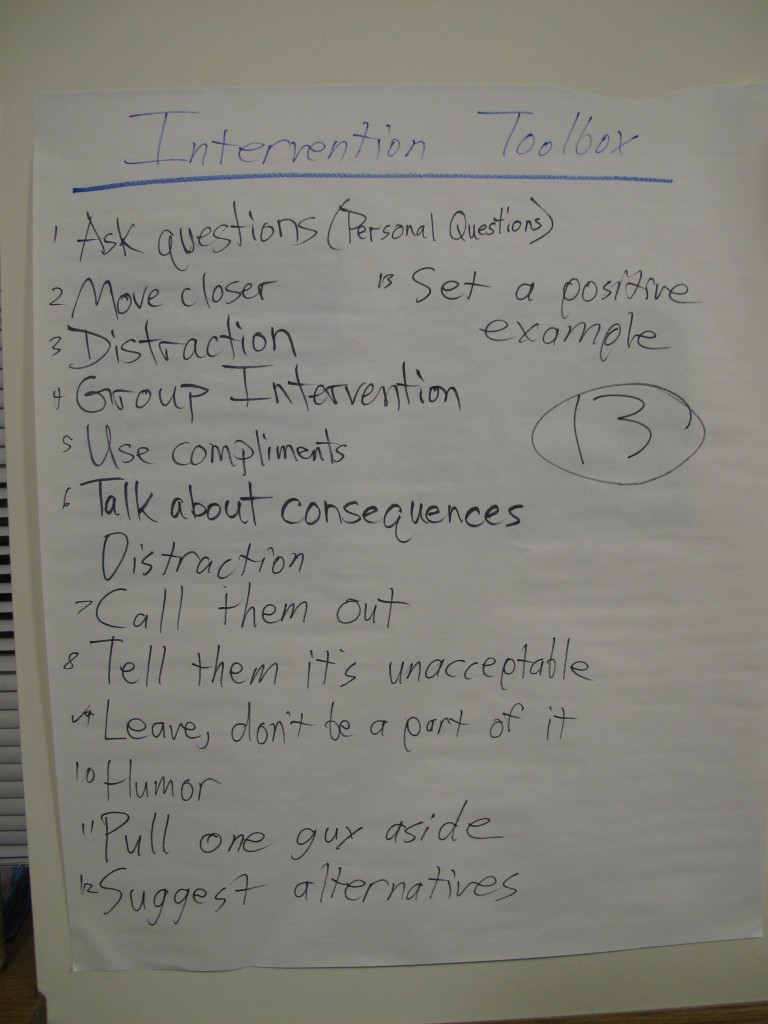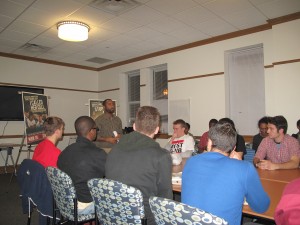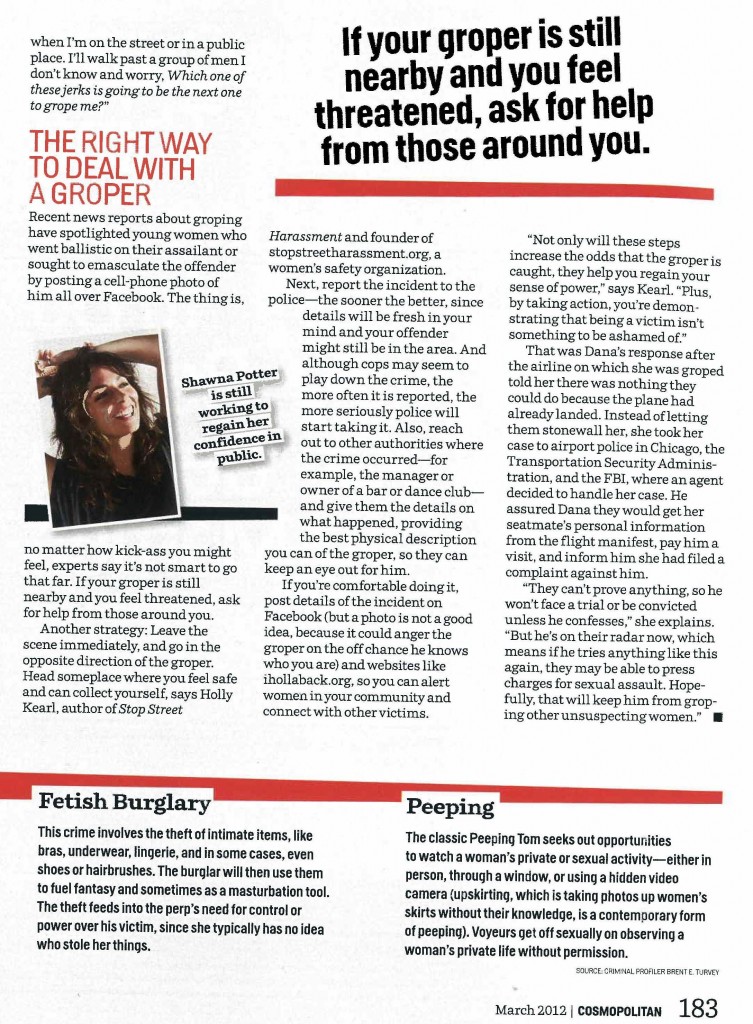Last night WUSA Channel 9 produced a news story about sexual harassment on the Washington, DC transit system. In it you can see what Metro’s stance is….that it isn’t a problem and that “one person’s harassment is another person’s flirting.” The text below the video is not a transcript, so you can gain more info by reading it after watching the video.
From around 1 – 3 p.m. EST today you can watch the DC City Council’s Performance Oversight Hearing of the Metro system (select Room 500). I’m joining several people, being led by Collective Action for Safe Spaces, in testifying about the problem of sexual harassment on the metro system because we DO think it’s a problem. We will give our recommendations for change: more data collection, a PSA campaign on how to report harassment, and more sensitivity training for metro employees.
More later on how it went and what was said. Wish us luck!








 If you pick up the March 2012 issue of
If you pick up the March 2012 issue of